Хаас за Германия
Ромен Грожан:
You went back to the Melbourne aero spec at Silverstone and you’ll run it again at the Hockenheimring. What did you learn from reverting back to that aero package and how did it compare to the aero spec you ran in Austria?
It was a good test to do. It was a tough call from the team, but a good test. When we brought the upgrade in Barcelona, I wanted to revert back on the Friday evening. For me, the feeling was not so good from the rear end, especially through medium- and high-speed corners. The feeling hasn’t been good in those corners since then. Going back to the Melbourne package, the car felt a lot better in those regions. It shows that something was not working as expected. Now the aero guys are looking into it, but we know it’s been our weakness. Obviously, that launch package has some limitations also. It has less downforce, but it has better stability.
Last year’s German Grand Prix proved to be a breakthrough race for you as you finished sixth and rattled off two more top-10 finishes afterward – and three more if you count the original outcome from the Italian Grand Prix. How helpful can just one positive result be in securing better finishes?
It doesn’t change much, to be fair. I go to Hockenheim with the same objective as always. I’m always trying to do my best, get a good race and be proud of what you’ve done. If it’s a top-10, great. But if it’s not, you’ve given your maximum.
The subject of bringing back refueling during Formula One races has seemingly gained some more momentum as FIA president Jean Todt has recommended it as a way to potentially improve the racing. What are your thoughts on refueling and how would it affect what you do behind the wheel, specifically as the car stays relatively light since it never really runs a heavy fuel load?
I am for refueling, I think it’s a positive to get the car faster and lighter. It makes it more demanding on the drivers. I believe also it could open some strategy. Driving a heavy car is not amazing. If we have lighter cars due to refueling, it’ll be better and also easier on the tires.
As GPDA (Grand Prix Drivers’ Association) director you’ll represent the drivers at the next meeting between the FIA, Formula One and teams as regulations for the 2021 season are discussed. Do you bring multiple insights to the table or do you look to gather a consensus opinion from your counterparts to present at the meeting?
We have an agenda as the GPDA. We have points we want to move forward. We’re very clear and all the drivers are involved. We’ll bring those points forward and answer as many questions as we can.
Is there anything specific pertaining to the 2021 regulations that you would like to see enacted?
There’s a wish from all the drivers to see better racing and more racing, not just a couple of teams dominating the whole field. That’s something I can share. It’s quite obvious. It’s definitely something drivers want to push forward.
Кевин Магнусен: While your teammate has reverted back to the Melbourne aero spec, you raced with the current aero spec at Silverstone and you’ll run the latest round of updates to the Haas VF-19 at the Hockenheimring. What are your expectations for your updated car in Germany?
We’re still looking to experiment and learn as much as possible with the issues we’re having. Hopefully, the upgrades we bring to Hockenheim will give us not only more answers, but also more performance.
With back-to-back races in Germany and Hungary effectively concluding the first half of the 2019 season, how important is it to gain some momentum and a further understanding of recent issues before the FIA-mandated summer shutdown?
It would be pretty awesome if we could finish off the first half of the season on a high. But, obviously, we need to go in with realistic expectations and keep focused on our objective, which is to try and learn and understand in order to be able to perform at a high level as soon as possible.
The subject of bringing back refueling during Formula One races has seemingly gained some more momentum as FIA president Jean Todt has recommended it as a way to potentially improve the racing. What are your thoughts on refueling and how would it affect what you do behind the wheel, specifically as the car stays relatively light since it never really runs a heavy fuel load?
I think refueling would be very good. I think it would have some positive effect on tires. It would make the racing closer between cars. It would be more fun for the drivers and more challenging in the races because the cars would be faster with the lighter fuel load.
A new set of regulations will debut in 2021, but they’re still being formulated. Is there anything specific pertaining to the 2021 regulations that you would like to see enacted?
I think refueling is a big one, but also I think it would be great to maintain some fast cars that can follow each other easily. Maybe they’re producing more of the aerodynamics and downforce from the bottom of the car, from the floor. Also, more equal resources for the teams to have closer competition between the front and back of the field.
You can race any Formula One car from any era. What is it and why?
I would say the McLaren MP4-4. It’s the most dominant racecar of all time. I think it’s a beautiful racecar, raced by (Ayrton) Senna and (Alain) Prost. They just looked so light, so slick, so low, and they sounded phenomenal.
Гюнтер Щайнер: Grosjean went back to the Melbourne aero spec at Silverstone and he’ll run it again at the Hockenheimring. What did the team learn from reverting back to that aero package and how did it compare to the aero spec featured on Magnussen’s car?
We decided on this exercise to get data and understand better what the difference between the two cars is, good or bad, then we can see where we can make improvements. We weren’t sure if the update we introduced in Barcelona was better or not. We’re running this again in Hockenheim, which is a different type of track with different temperatures – they’ll be a lot higher – and, as we all know, we couldn’t get a lot of data from the race at Silverstone from either of the cars.
When you run differing aero specs on the cars, does that add a new level of work for the crew and analysis for the engineers? More specifically, how do they compare and contrast the two setups to, ideally, find the best setup for the two cars?
From a setup perspective, this is not a big issue. Each driver has their own engineers working on that. Mainly where it adds work is for the engineers back home who then have to compare data and make the car better. Setup work, it’s not a big difference. For sure, it doesn’t make things easier, but with the little bit more work that needs to be done, we can handle that.
Another round of updates to the Haas VF-19 comes at Germany – its second major update since the Spanish Grand Prix in mid-May. What aspects of the car are being updated and is there a certain issue you’re looking to rectify with the update?
We’ve changed a few parts on the car. There’s not one specific area we’re targeting. We’re just making the car, in general, better, more drivable with more downforce, which always helps you go fast. We’re trying to make the tires work better for us. That’s the biggest improvement we can make at the moment – getting into the window of the tire – and that’s got a lot to do with downforce.
With back-to-back races in Germany and Hungary effectively concluding the first half of the 2019 season, how important is it to gain some momentum and a further understanding of recent issues before the FIA-mandated summer shutdown?
We’re putting a lot of effort into improving the situation we’re in. We need to get the understanding of where we are and where we didn’t work in the right direction. That’s the thing we have to do.
The subject of bringing back refueling during Formula One races has seemingly gained some more momentum as FIA president Jean Todt has recommended it as a way to potentially improve the racing. What are your thoughts on refueling and how would it affect a team’s logistics – from transporting equipment to having additional personnel as part of the pit stop?
I find refueling very interesting. It could help the spectacle, but we need to be clever about it, not to just introduce more people to do the pit stops. Maybe we need to lose a few people on pit stops in general. So if you’re clever, we design some very simplistic equipment to refuel and don’t employ another five people to refuel. We just need to handle it properly to have more show, but not more cost.


















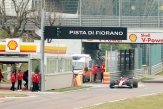
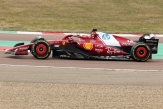
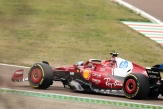
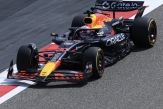
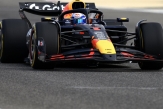
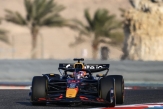

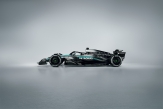
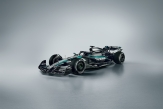
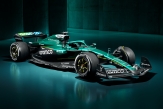
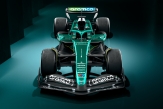
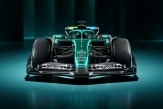
.jpg)
.jpg)
.jpg)

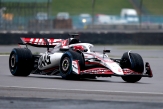

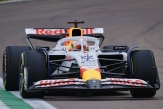
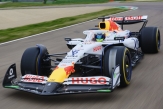
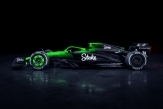
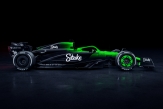

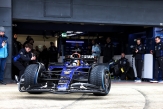
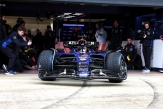
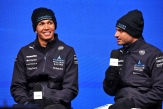

02/12/2025 от Огнян Тенчев (drJeckyll), няма коментари